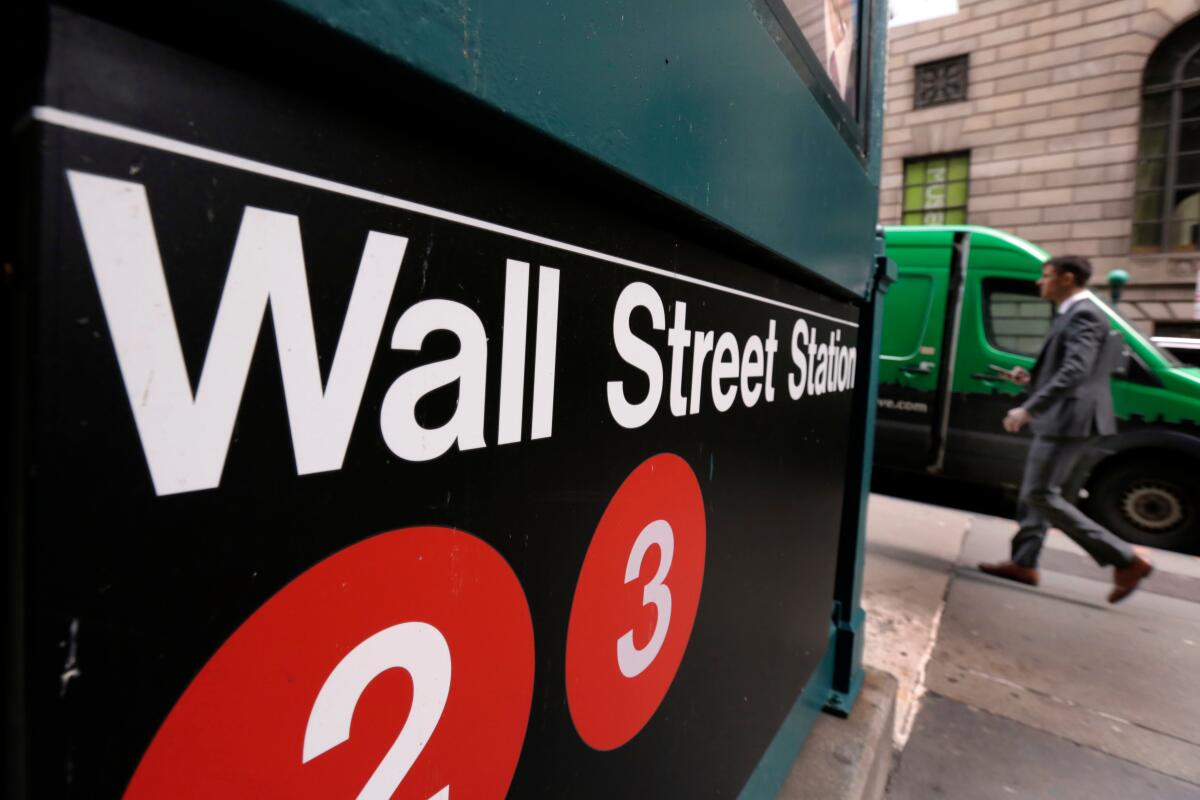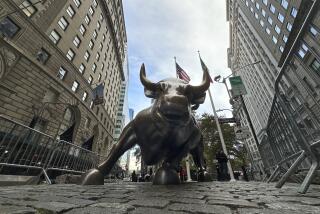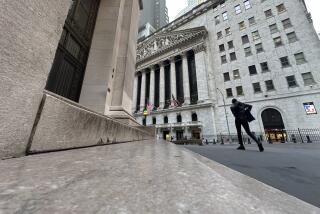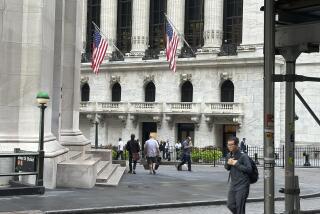Wall Street’s losses worsen as markets tumble worldwide

- Share via
Stocks racked up more losses on Wall Street on Monday, leaving the Standard & Poor’s 500 at its lowest point in more than a year.
The sell-off came as renewed worries about China’s economy piled on top of global financial markets already battered by rising interest rates.
The S&P 500 tumbled 3.2%, deepening its losses after five straight down weeks, its longest such streak in more than a decade.
The Dow Jones industrial average fell 2% and the Nasdaq composite pulled back 4.3% as tech stocks again took the brunt of the selling. Monday’s sharp drop leaves the S&P 500, Wall Street’s main measure of health, down 16.8% from its record set early this year.
Wall Street’s pullback followed a worldwide swoon for markets. Stocks fell across Europe and much of Asia as did assets including old-economy crude oil and new-economy Bitcoin. Bond yields and the price of gold also fell.
Among U.S. stocks, the energy sector, a star performer in recent weeks, accounted for some of the sharpest declines as oil and gas prices fell. Marathon Oil and APA each sank more than 14%.
“Basically, investors are finding it very difficult to find a place to hide,” said Sam Stovall, chief investment strategist at CFRA. “The traditional safe havens, such as defensive sectors or such as bonds, are not doing that well. Commodities are not doing well.”
The S&P 500 fell 132.10 points to 3,991.24. The Dow dropped 653.67 points to close at 32,245.70. The Nasdaq slid 521.41 points to 11,623.25.
Smaller-company stocks also fell broadly. The Russell 2000 gave up 77.48 points, or 4.2%, to end at 1,762.08.
Esports giant Riot Games has grown into one of the region’s largest office tenants as the video game industry evolves into a major economic player.
Most of this year’s damage has been the result of the Federal Reserve’s aggressive flip away from doing everything it can to prop up financial markets and the economy. The central bank has already pulled its key short-term interest rate off its record low near zero, where it sat for nearly all the pandemic. Last week, it signaled it may implement additional increases of double the usual amount in upcoming months, in hopes of stamping out the high inflation sweeping the economy.
The moves by design will slow the economy by making it more expensive to borrow. The risk is the Fed could cause a recession if it raises rates too high or too quickly. In the meantime, higher rates discourage investors from paying very high prices for investments because investors can get a better return from owning super-safe Treasury bonds than they could just a few weeks ago.
That’s helped cause a roughly 29% tumble for Bitcoin since April’s start, for example. It dropped 9.7% on Monday, according to Coindesk.
Worries about the world’s second-largest economy added to the gloom Monday. Analysts cited comments over the weekend by a Chinese official warning of a grave situation for jobs, as the country hopes to halt the spread of COVID-19.
Authorities in Shanghai have again tightened restrictions, amid citizen complaints that they feel endless, just as the city was emerging from a month of strict lockdown after an outbreak.
The fear is that China’s strict anti-COVID policies will add more disruptions to worldwide trade and supply chains, while dragging on its economy, which for years was a main driver of global growth.
In the past, Wall Street has endured similar pressures because of the strong profit growth that companies were producing.
But this most recent earnings reporting season for big U.S. companies has yielded less enthusiasm. Companies overall are reporting larger profits than expected, as is usually the case. But discouraging signs for future growth have been plentiful.
The number of companies citing “weak demand” in their conference calls after earnings reports jumped to the highest level since the second quarter of 2020, strategist Savita Subramanian wrote in a BofA Global Research report. Tech earnings are also lagging, she said.
The tech sector is the largest in the S&P 500 by market value, giving it additional weight for the market’s movements. Many tech companies saw profits boom through the pandemic as people looked for new ways to work and entertain themselves while locked down at home. But slower profit growth leaves their stocks vulnerable after their prices shot so high on expectations of continued gains.
The higher interest rates engineered by the Fed are also hitting tech stocks particularly hard because they’re seen as some of the market’s most expensive. The Nasdaq‘s loss of 25.7% so far this year is much sharper than that for other indexes.
Electric vehicle maker Rivian Automotive slumped 20.9% on Monday as restrictions expire that prevented some big investors from selling their shares after its stock market debut six months ago. The company has lost more than three-quarters of its value so far this year.
The yield on the 10-year Treasury has shot to its highest level since 2018 as inflation and expectations for Fed action rose. It moderated Monday, dipping to 3.03% from 3.12% late Friday. But it’s still more than double where it started the year.
Oil prices fell, weighing down energy stocks. Benchmark U.S. crude fell 6.1% to $103.09 a barrel, though it’s still up about 40% this year. Brent crude, the international standard, fell 5.7% to $105.94 a barrel.
Associated Press writer Yuri Kageyama contributed to this report.
More to Read
Inside the business of entertainment
The Wide Shot brings you news, analysis and insights on everything from streaming wars to production — and what it all means for the future.
You may occasionally receive promotional content from the Los Angeles Times.











